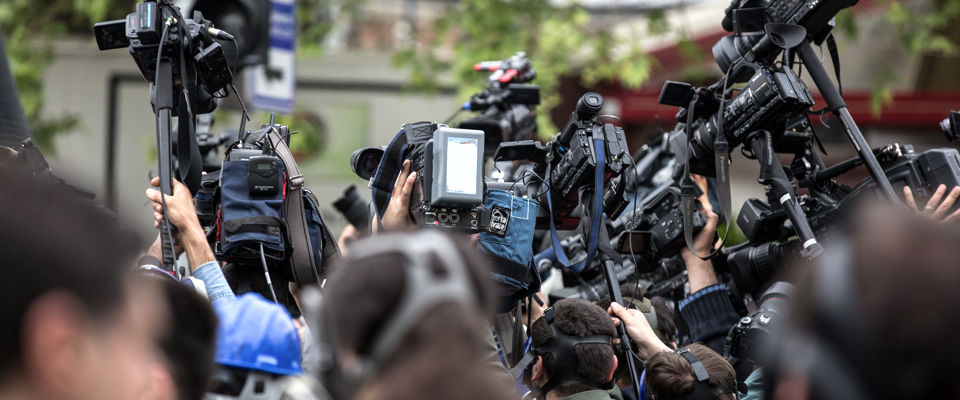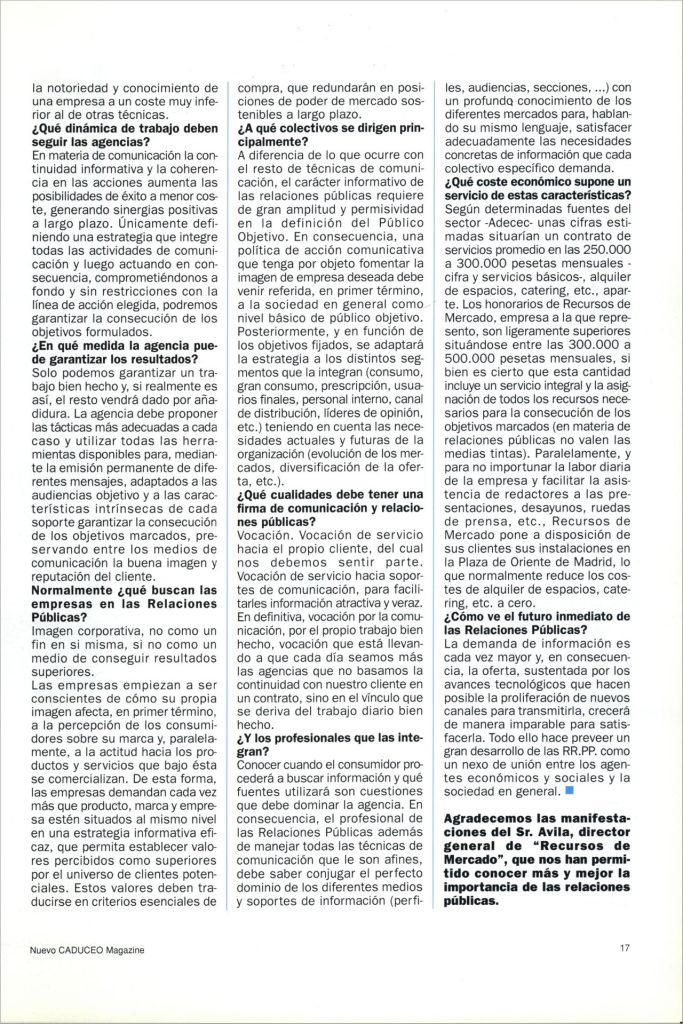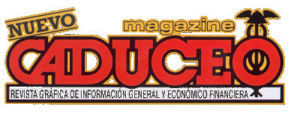In this so-called “Age of Communication”, one key variable is becoming increasingly important: information. The high level of education that characterises our times means that the demand for information required by consumers to make a decision is increasing. Consequently, the supply of information, supported by the technological advances that have made possible the proliferation of new channels for transmitting it, is growing unstoppably to meet the demand. In this context, the broadcasting of information is inherent to any expansion process that a company or institution intends to undertake or to boost any initiative, and public relations is already, in its own right, the differentiating element, in no case a substitute for other actions, but complementary and at the same time very necessary.
To learn more about this communication technique, we have approached Recursos de Mercado through its general manager, a company with a marked corporate identity that, since its foundation in 1993, has remained faithful to a work philosophy that has allowed it to position itself in a short time as one of the main companies in the sector and a point of reference for the media.
What is the place of Public Relations in a company’s marketing and communication strategy?
PR is one of the six communication techniques (advertising, promotion, PR, sponsorship and patronage, direct marketing and sales force communication) available to companies to contribute to the achievement of the objectives set and must be understood as a continuous process in which its different elements must be perfectly harmonised and form part of an Integral Communication Plan in line with the company’s marketing strategy.
In this context, what differential values does Public Relations provide?
The strength of Public Relations lies in its massive nature, in its constancy and in its effectiveness, as the messages are of a high informative content and are issued, contrasted and endorsed by a third party, which makes it an appropriate technique to produce a great impact on the notoriety and awareness of a company at a much lower cost than other techniques.
What working dynamics should agencies follow?
In terms of communication, continuity of information and coherence in actions increases the chances of success at a lower cost, generating positive synergies in the long term. Only by defining a strategy that integrates all communication activities and then acting accordingly, committing ourselves fully and without restrictions to the chosen line of action, can we guarantee the achievement of the formulated objectives.
What is the key to success in Public Relations?
The work dynamic starts with an institutional communication plan that allows us to establish an initial work platform. After a thorough analysis of the information, we set the communication objectives, the achievement of which guarantees the success of our work. We then design a general strategy that gives rise to the different Public Relations tactics.
Finally, we will need to establish an initial calendar of activities that assigns tasks and determines responsibilities and a monitoring and control system that allows us to detect deviations and act accordingly. This first work platform is updated on a daily basis, in order to take advantage of the opportunities offered by the environment.
What do companies normally look for in public relations?
Corporate image, not as an end in itself, but as a means to achieve superior results. Companies are beginning to be aware of how their own image affects, firstly, consumers’ perception of their brand and, at the same time, their attitude towards the products and services marketed under it. Thus, companies are increasingly demanding that product, brand and company be placed on the same level in an effective information strategy, which makes it possible to establish values perceived as superior by the universe of potential customers. These values must be translated into essential purchasing criteria, which will result in long-term sustainable market power positions.
What are the main target groups?
Unlike what happens with other communication techniques, the informative nature of public relations requires great breadth and permissiveness in the definition of the target audience. Consequently, a policy of communicative action aimed at promoting the desired company image must refer, in the first instance, to society in general as the basic level of the target audience. Subsequently, and depending on the objectives set, the strategy will be adapted to the different segments that comprise it (consumer, mass consumer, prescription, end users, internal personnel, distribution channel, opinion leaders, etc.) taking into account the current and future needs of the organisation (evolution of the markets, diversification of the offer, etc.).
What qualities should a communications and public relations firm have?
Firstly, vocation of service towards our own clients, of which we must feel part. Vocation of service towards the media and communication media, to provide them with attractive and truthful information. Vocation of service towards communication media, to provide them with attractive and truthful information. In short, a vocation for communication, for a job well done, a vocation that is leading more and more agencies to base their continuity with our client not on a contract, but on the bond that derives from a job well done on a daily basis.
What about the professionals involved?
Knowing when the consumer will proceed to look for information and which sources he will use are issues that the agency must master. Consequently, the public relations professional, in addition to mastering all the related communication techniques, must know how to combine a perfect command of the different media and information supports (profiles, audiences, sections, etc.) with a deep knowledge of the different markets in order to satisfy the specific information needs of each specific group by speaking their language.
What is the economic cost of such a service?
According to certain sources in the sector -Adec- estimated figures would place an average service contract at 250,000 to 300,000 pesetas (coins used 25 years ago) a month -basic fees and services-, space rental, catering, etc., apart. The fees of Recursos de Mercado, the company I represent, are slightly higher, between 300,000 and 500,000 pesetas per month, although it is true that this amount includes a comprehensive service and the allocation of all the resources necessary to achieve the objectives set (there is no room for half-measures in public relations). At the same time, in order not to interfere with the daily work of the company and to facilitate the attendance of editors at presentations, breakfasts, press conferences, etc., Recursos de Mercado provides its clients with its facilities in the Plaza de Oriente in Madrid, which normally reduces the costs of renting space, catering, etc. to zero.
How do you see the immediate future of Public Relations?
The demand for information is growing and, consequently, the supply, sustained by technological advances that make possible the proliferation of new channels for transmitting it, will grow unstoppably to satisfy it. All of this leads us to foresee a major development of public relations as a link between economic and social agents and society in general.







